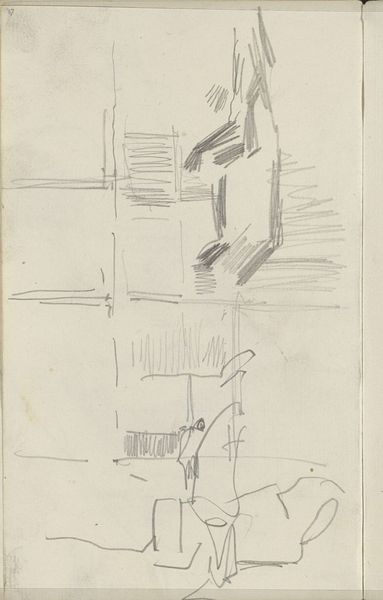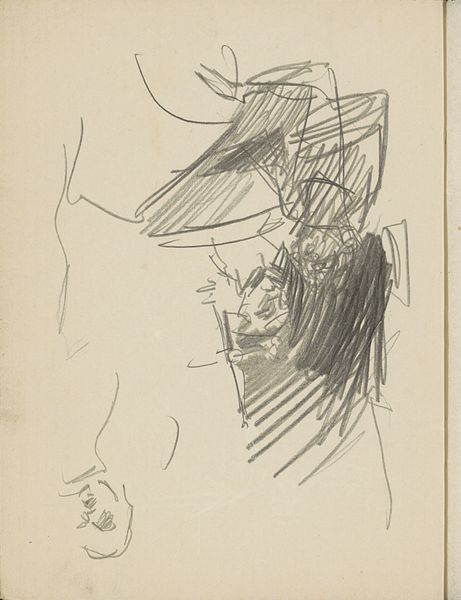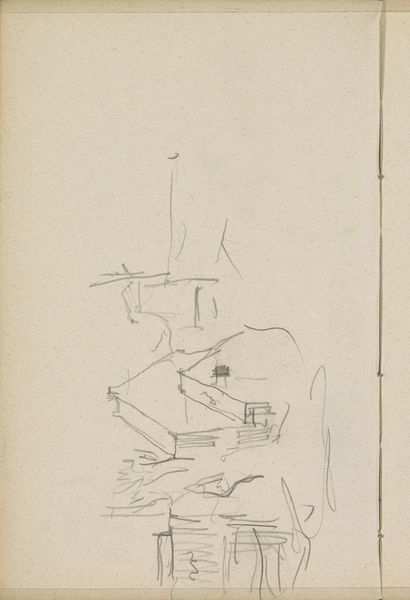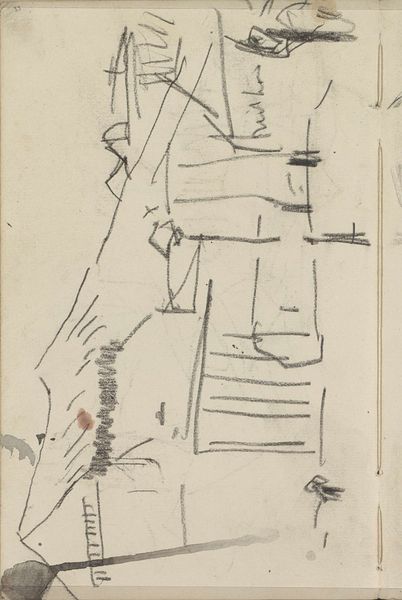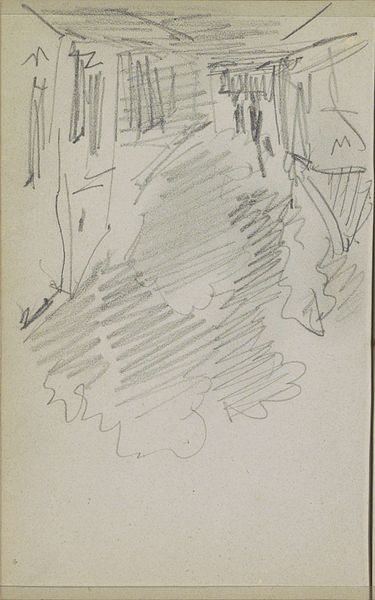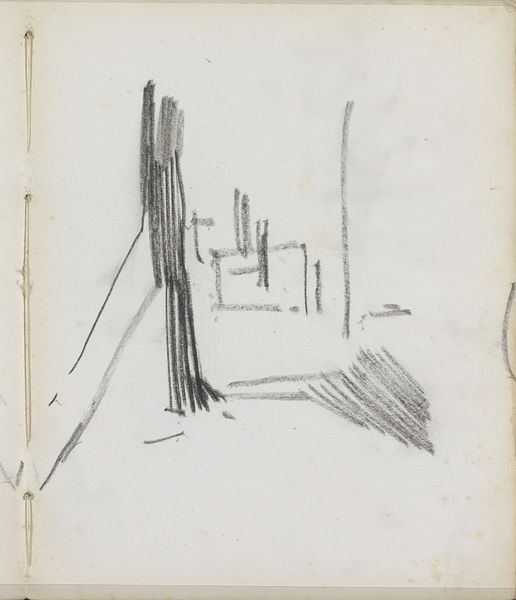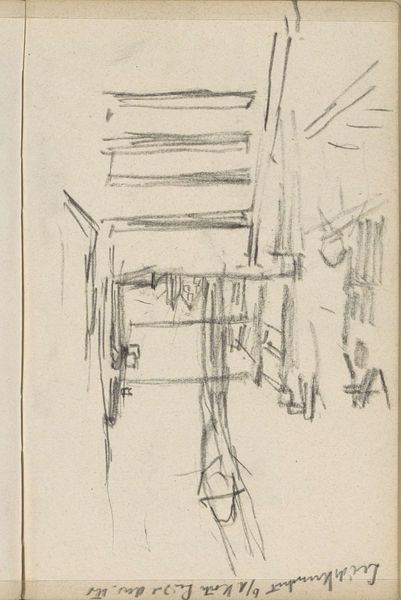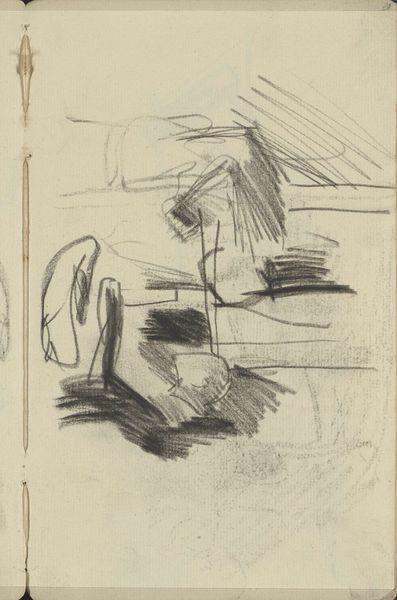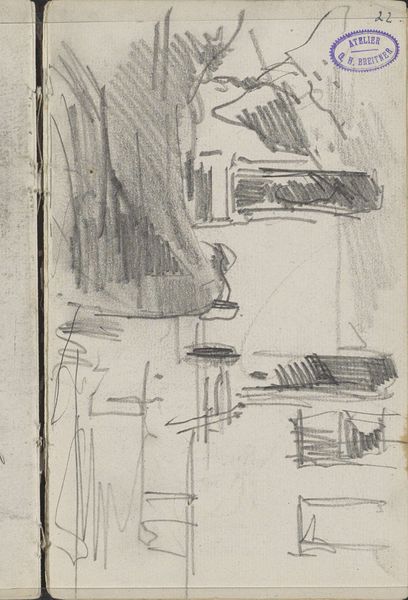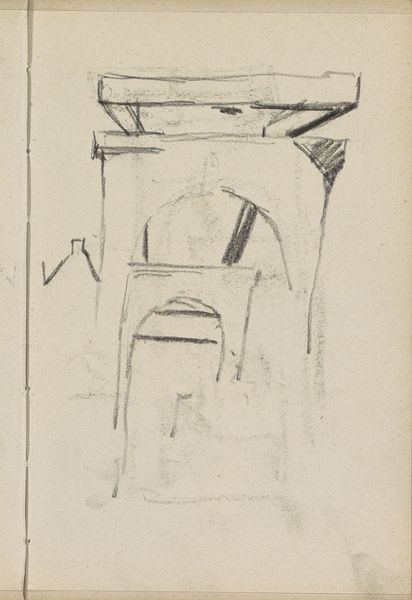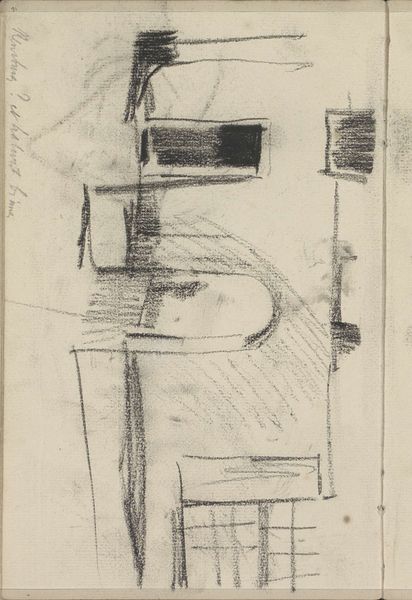
The Shadow that Lies Floating on the Floor. Illustration to The Raven by Edgar Allan Poe 1875
0:00
0:00
drawing, print, ink, pen
#
drawing
#
narrative-art
# print
#
ink
#
symbolism
#
pen
Dimensions: sheet: 21 5/8 x 13 3/4 in. (55 x 35 cm)
Copyright: Public Domain
Curator: I see stark contrasts here. It’s evocative, in a rather unsettling way. The bold lines create these deep pools of shadow, dominating the composition. Editor: This is “The Shadow that Lies Floating on the Floor. Illustration to The Raven by Edgar Allan Poe,” made in 1875 by Édouard Manet. It is currently held at the Metropolitan Museum of Art. The work, rendered with pen and ink, depicts a shadowy scene from Poe’s famous poem. Curator: Poe’s “Raven,” ah, so we're firmly planted in the landscape of 19th-century melancholy. You can almost feel the suffocating darkness that permeates the poem itself. Manet's stark lines mirror the stark emotional landscape. But it makes you wonder: Whose shadow is it? Editor: Manet engaged intensely with literature, translating literary themes into the visual arts, effectively popularizing textual materials to an eager public. Consider the socio-political dynamics during the period, as both the poem and Manet’s images served to popularize critical thinking. The Raven became almost a metonym of intellectual skepticism after the failed revolutions of 1848. Curator: Absolutely. There's this palpable sense of unease – the kind that stems from a society grappling with its own failures and uncertainties. The way the shadow almost becomes a character itself speaks volumes about the era's collective anxieties, gender norms, and growing skepticism of religious doctrine, making the figure a sort of embodiment of marginalized voices and experiences. Editor: Indeed. Shadows can also symbolize the anxieties inherent to that particular period, marking a stark critique against authoritative systems. What do you think about its ability to act as a piece of art separated from Poe’s poem? Curator: Even without knowing the literary link, the power dynamic is intense. That ambiguous presence commands the space; it evokes feelings of repression, uncertainty. Whether read within the framework of "The Raven" or as an artwork of its own accord, I find myself questioning systems of power in an era rife with rapid social and political shifts. Editor: Agreed. This has offered new insights into how images intersect with literature, history, and, perhaps most importantly, challenge us to reconsider art’s role in reflecting society and fostering dialogue. Curator: Indeed. Manet asks us: Who are we when engulfed by our shadows? The answers lie as much in the artwork as they lie within us.
Comments
No comments
Be the first to comment and join the conversation on the ultimate creative platform.


